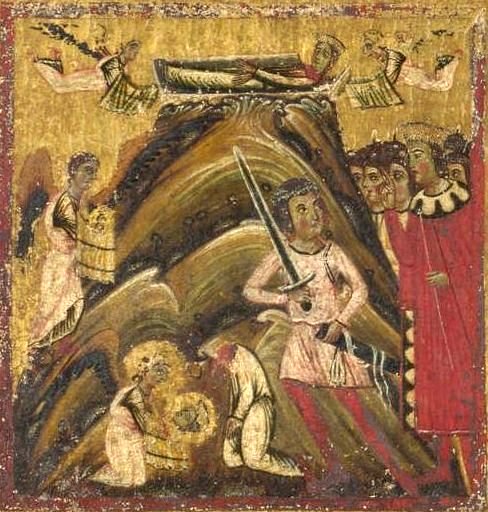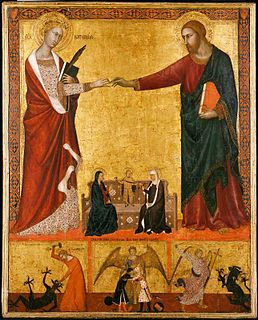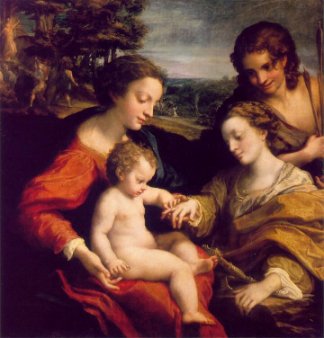|
St.
Catherine |
|
|
|
|
| Also known as St Catherine of Alexandria. Her best known attribute is the wheel on which it was intended she would be killed. Divine intervention caused the wheel to collapse. | |
|
|
|
|
Catherine was one of a number of 'virgin-martyrs', legendary women who were prepared to suffer torture and death rather than surrender their virginity or compromise their Christian faith. As with St Margaret, such legends always involve a villainous male character. In this case is is the wicked Emperor Maxentius, (Quote: 'Offer sacrifice and live, or submit to exquisite torture and die!') who ruled from 306 - 312. Here is the entry on Catherine from the Catholic Encyclopaedia: Of noble birth and learned in the sciences, when only eighteen years old, Catherine presented herself to the Emperor Maxentius. She endeavoured to prove how iniquitous was the worship of false gods. Astounded at the young girl's audacity, but incompetent to vie with her in point of learning the tyrant summoned numerous scholars whom he commanded to use all their skill in specious reasoning that thereby Catherine might be led to apostatize. But she emerged from the debate victorious. Several of her adversaries, conquered by her eloquence, declared themselves Christians and were at once put to death. Furious at being baffled, Maximinus had Catherine scourged and then imprisoned. Meanwhile the empress, eager to see so extraordinary a young woman, went with Porphyry, the head of the troops, to visit her in her dungeon, when they in turn yielded to Catherine's exhortations, believed, were baptized, and immediately won the martyr's crown. The king ordered that the empress's breasts be torn off, followed by her beheading. He then blamed Catherine for her death. The Golden Legend continues: |
|
|
When the saint had been beheaded, milk flowed from her body instead
of blood. Angels gathered up her body and took it from that place to Mount
Sinai. Here they gave her an honourable burial. (Oil still issues from her
bones and restores the limbs of the weak.) Magarito's scene shows Catherine being beheaded,
then her body being carried off to Mount Sinai. |
|
|
|
|



